Michael Bay movies are more than a complex assembly of explosions. He’s a skilled craftsman from which filmmakers, young and old, can learn a lot from his films. If you’re hoping for another post that attacks Bay as a poor filmmaker… you’re in the wrong place.
In this post, we break down the directing style of Michael Bay, his editing techniques, a tutorial on his 360 shot, and provide a list of his movies.
Lezgo.
Watch: Michael Bay's 360 Hero Shot
Michael Bay Biography
1. Who is Michael Bay?
Michael Bay was born in Los Angeles, he was adopted and attended an exclusive prep school, Crossroads in Santa Monica.
Michael Bay graduated from Wesleyan University in 1986, and was a classmate with Joss Whedon, who is complimentary of Bay’s work.
Bay then received an MFA from the Art Center College of Design.
He made commercials at Propaganda Films under David Fincher.
YouTuber Patrick (H) Willems put together a very fair and illuminating video essay and analysis of Michael Bay that is worth a watch:
Michael Bay: Understanding a True American Auteur | Part One
Don't worry, there is even more good stuff.
Watch Part II of this video below:
Michael Bay: Understanding a True American Auteur | Part Two
If you watched these videos, you will understand a lot more about the motivation behind a lot of what Bay does in his movies, but there is still a huge amount to learn from his filmmaking values and style.
Michael Bay's custom camera
Now you know a little more about Michael Bay.
Auteur Theory Made Practical
Explore directing techniques used by the greats
Learn the styles of these iconic auteur directors. Explore directing tips you can immediately put into action on your next project.
Explore More Auteur Directors
Michael Bay Movies
2. How to direct like Michael Bay
There is a great video from Tony Zhou, creator of the YouTube channel, Every Frame a Painting that does an exceptional job at describing a lot of the directing and editing techniques Michael Bay uses in his movies:
What is Bayhem?
Michael Bay understands mise-en-scène better than most directors, and he sometimes gets a bad wrap because his style is so polarizing.
Just because Bay uses power tools and car parts for production design doesn’t make it any less sophisticated than a Wes Anderson film.
The stories he builds can often be juvenile...
But his craftsmanship is pretty stellar.
Michael Bay is hard to work for
Zhou and Willems provide much more accurate analysis and criticism of his work than most ever will. They give credit where it is due. In fact, whenever I read or listen to someone trash talk Michael Bay as if his entire directing style is nothing but explosions and sex appeal…
It makes me a bit... sad?
Not for Michael Bay, mind you, but people shouldn't ignore his filmmaking style and craftsmanship, even where they feel they’ve “pin-pointed” his cinematic tricks. The truth is that... they haven't.
Let’s dive into the films of Michael Bay, and how he build his movies through highly complex and imaginative filmmaking craft.
Michael Bay Films
3. Quick camera movement
Michael Bay moves the camera at speeds that could be considered pretty fast, but it is never too fast for human eyes to register the action. Quick camera moves and unstable footage can be compelling if trackable.
Many directors go too fast.
He's found the optimum speed for moving the camera in a way that generates a lot of energy while not moving so quickly that our brains can't comprehend the massive amount of visual information on screen.
Pain & Gain Gym Scenes
This is one of the reasons Michael Bay movies are pretty fun to watch, because everything is pretty clear despite all of the chaotic motion.
Now, you may disagree with my assessment, and believe that Michael Bay moves the camera too quickly in his films, but when you compare this with similar directors, he has a much higher rate of conversion for clear and energetic shots than many other similar filmmakers.
Why is this important?
It allows for his films to work because his style of editing is often so fast and liberal that clarity must be the main priority of his shots.
FILM SCENES THE “BAY” WAY
4. Change shot size and shot level
Michael Bay movies have a lot of shots that change size or level. Many moving shots will choose to remain on a single axis, say laterally, but Bay’s move on the Z-axis as well as Y-axis which helps to make them more complex by gathering additional information.
If a photograph (normally) limits you to a specific area, then what advantage does a cinema camera provide? Well, you can move it to various different areas to show the entire view of something.
Pearl Harbor Battle Scenes
Michael Bay applies this idea to the majority of his setups, and what you get is an energetic and well composed shot that slides into the cut.
There are times, specifically with dialogue scenes, where Bay will track with actors at a set distance to keep them in focus and record the lines.
Of course he has static shots, but seldom are they similar in size or level to the surrounding shots. He will change the shot size, level, or even use a dutch angle to help tell the story, or to simply shake things up.
Think about the theme and events of this scene in Armageddon:Shotgun Scene | Armageddon
This scene in Armageddon gives you a really good look into how he uses film grammar, and there are some pretty clever moments that could be compared to many of the respected filmmaking auteurs.
You can see how each of these shots work together in the shot list below:
Michael Bay Shot List • Shot Listed in StudioBinder
Michael Bay starts this scene with a wide shot of the setting.
Something to give us a sense of the space:
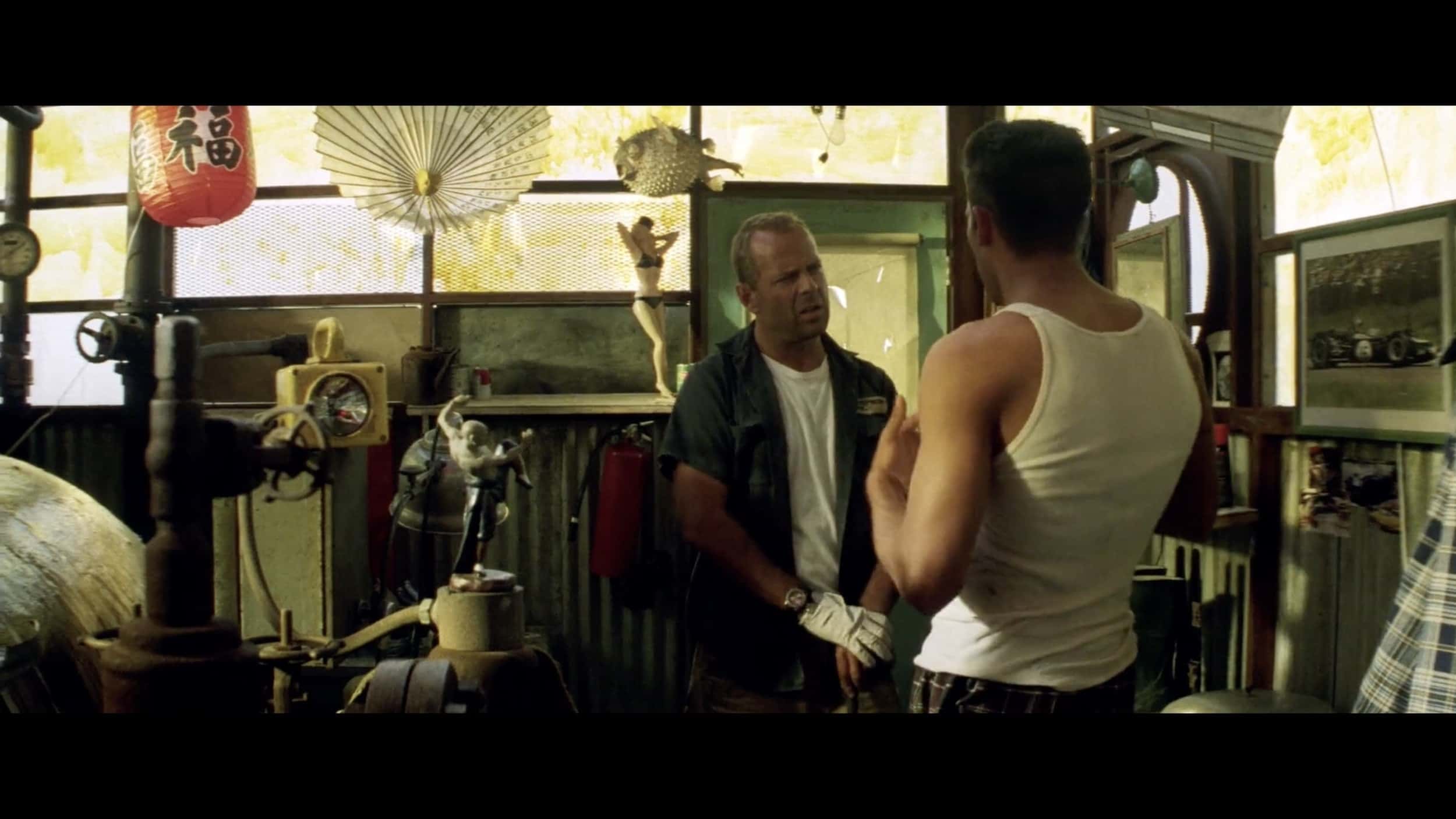
Wide Shot in Armageddon
Despite the underlying comedy, this is a serious moment for both of the characters in this scene. He alternates between MCUs and CU on Harry (Bruce Willis) as he scolds his employee, AJ (Ben Affleck).
Many of these are over-the-shoulder shots: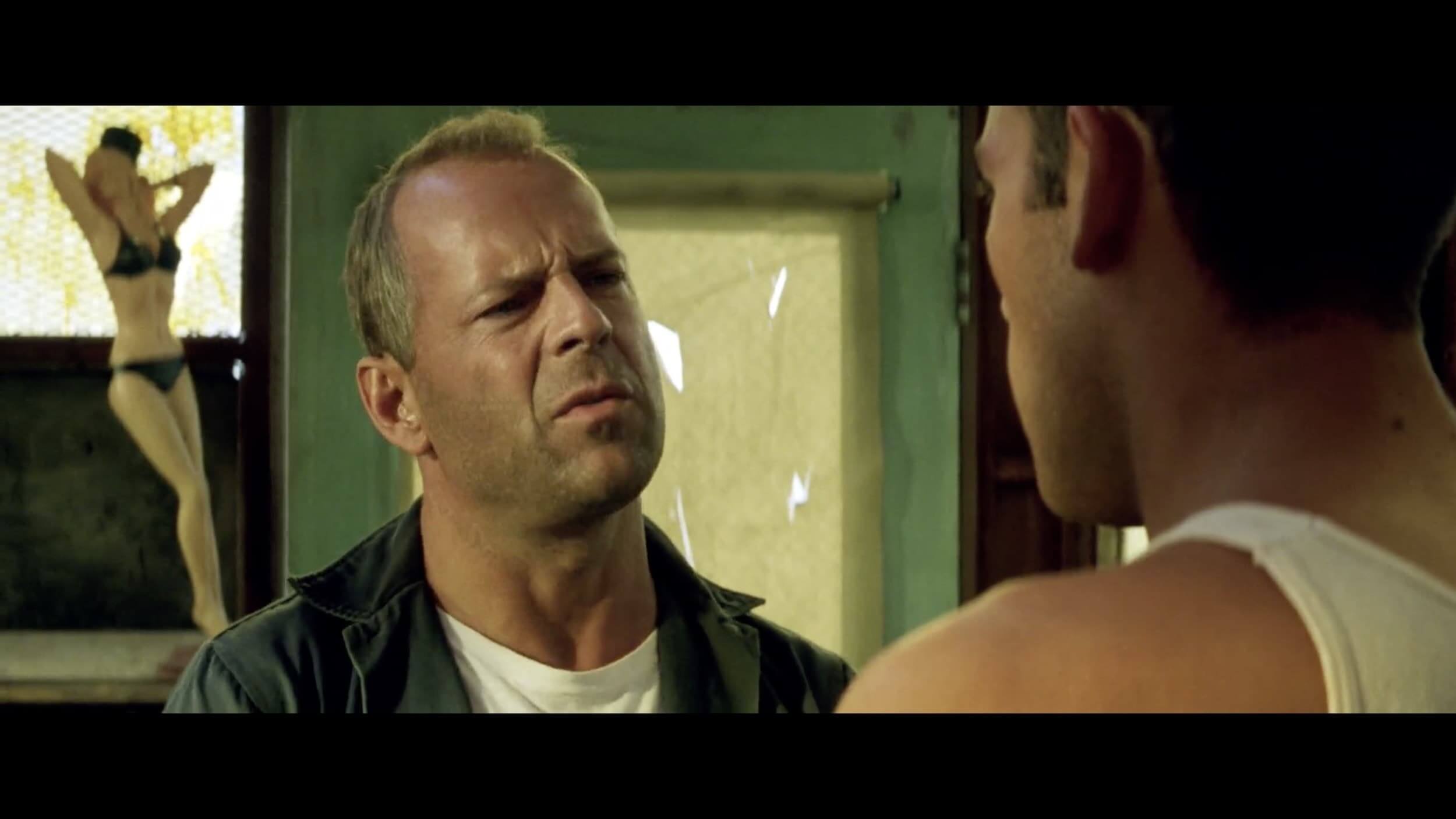
MCU OTS in Armageddon
We’ve got AJ in a medium close-up with dark and ominous lighting on Harry, which has him looming in the back edge of the frame:
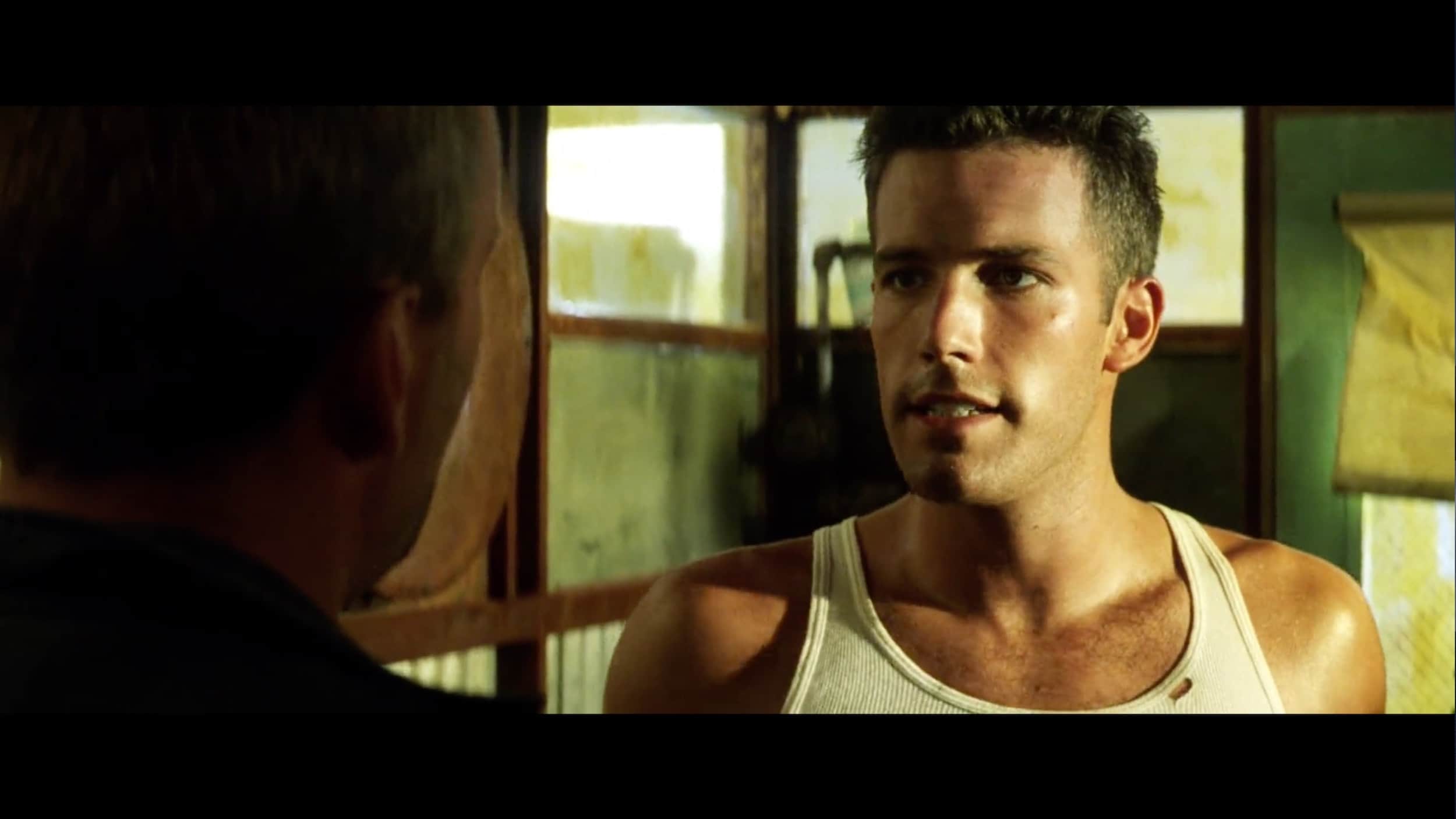
MCU OTS in Armageddon
What happens next?
As Harry eases, we move back out to matching MCUs on Harry and AJ:
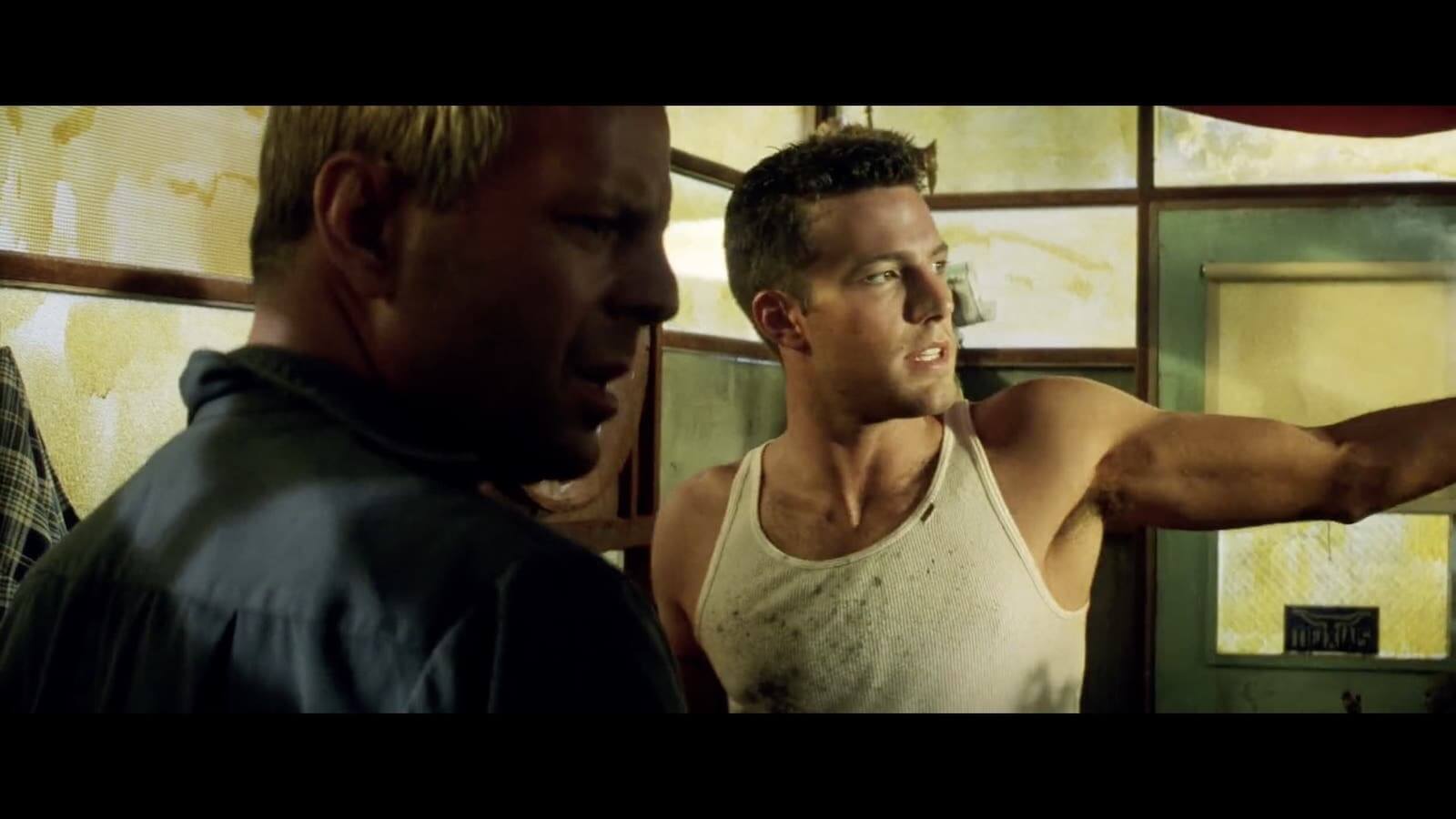
Medium OTS in Armageddon
The moment AJ slips up by apologizing too quickly, Michael Bay moves his camera on top of the line, and we get the uncomfortable shot that almost seems a bit like a POV shot from Harry’s perspective:
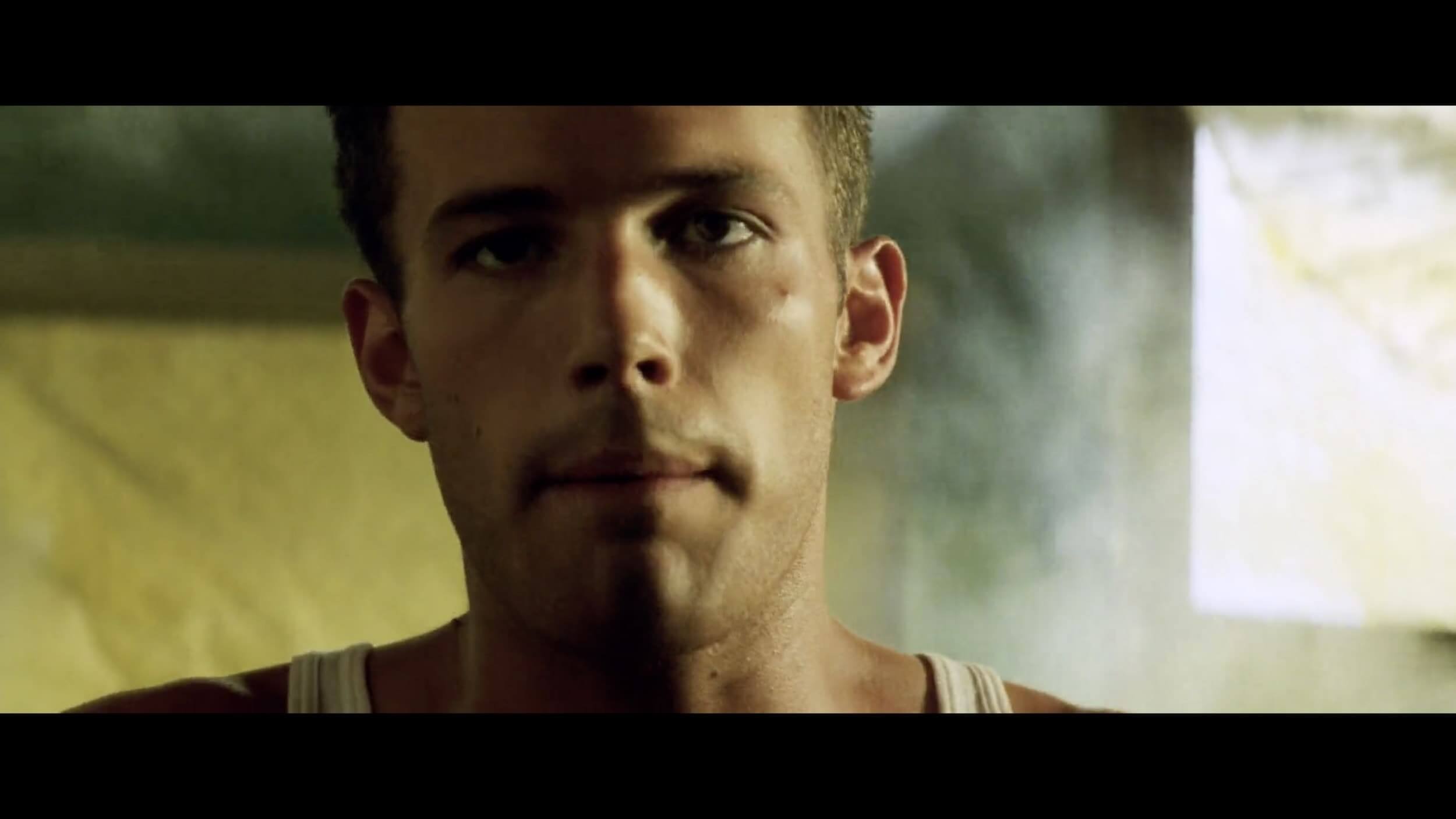
CU POV in Armageddon
The scene has taken a turn, and Bay repositions his camera.
Bay jumps back to the close-up on Harry while the suspicion grows.
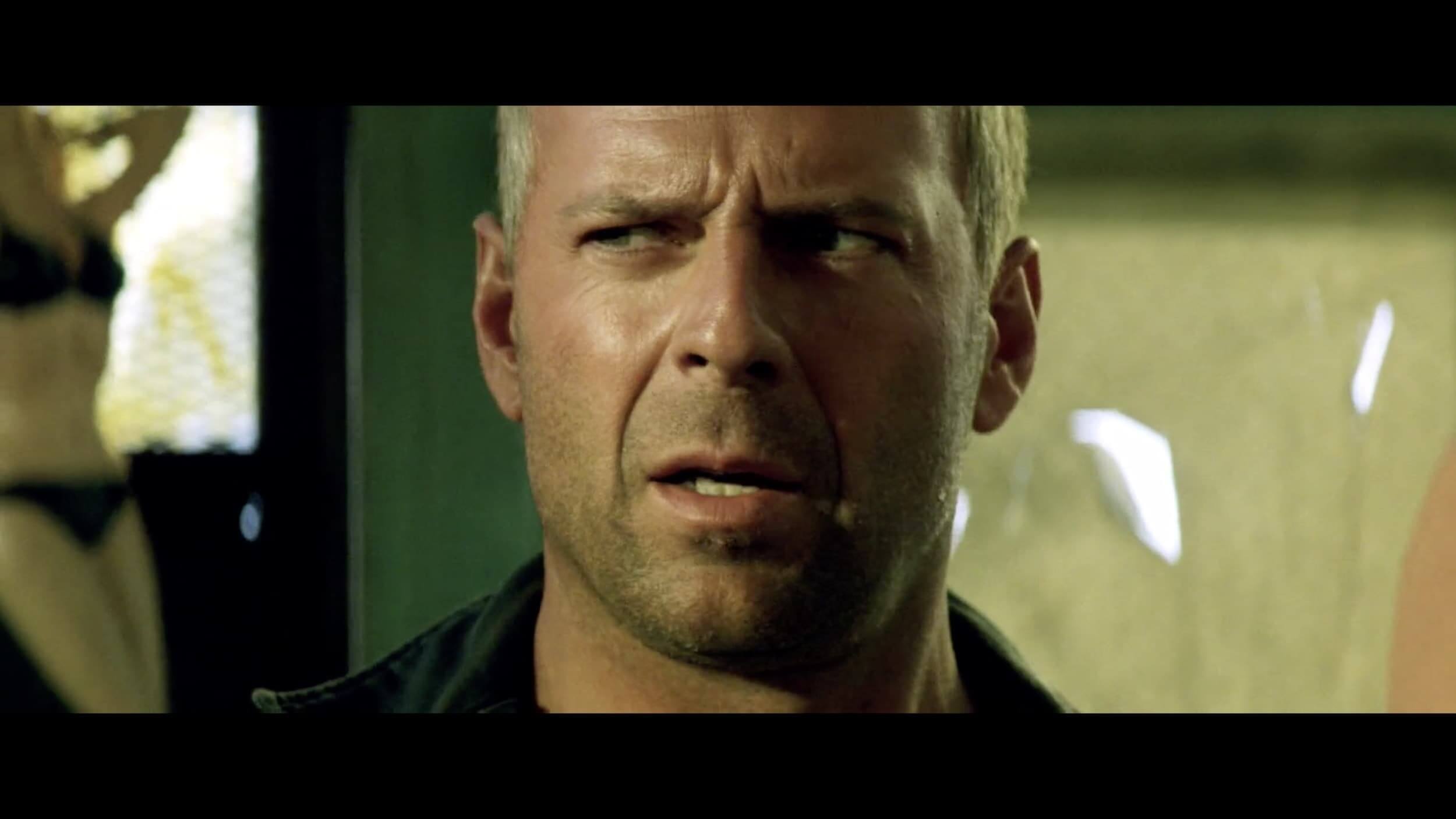
CU in Armageddon
When Harry spots something hanging from the pipe, Bay decides to direct our eyes by moving the camera down to the ground, to a shot at a low angle, so that both the object and both the actors are in the frame:
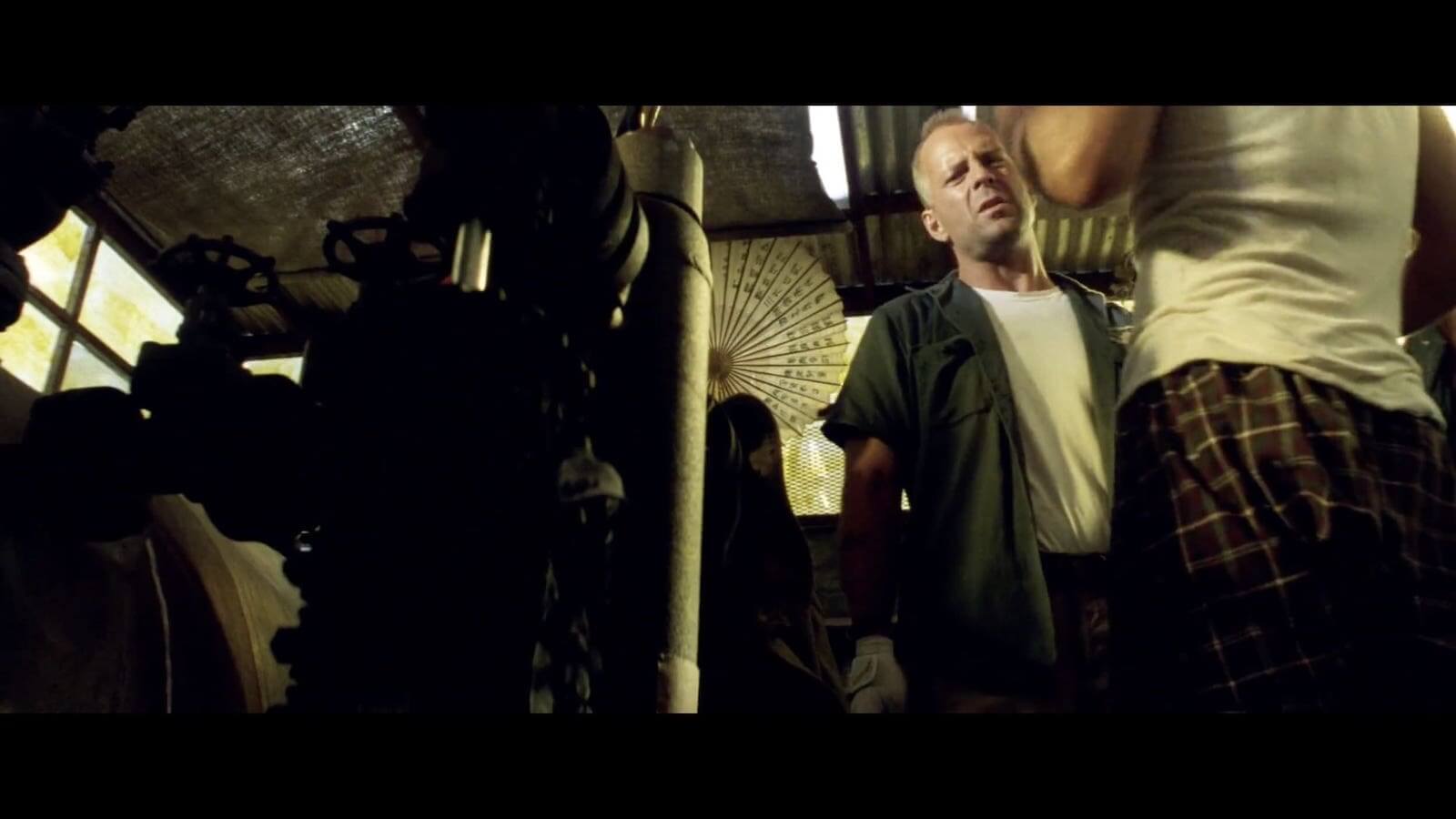
Low Angle in Armageddon
The next shot Bay uses is a dutch angle from the corner of the room, with tools and pipes in the way to make the shot complex and to tell us a bit about the world of these characters. He cuts away quicker than most:
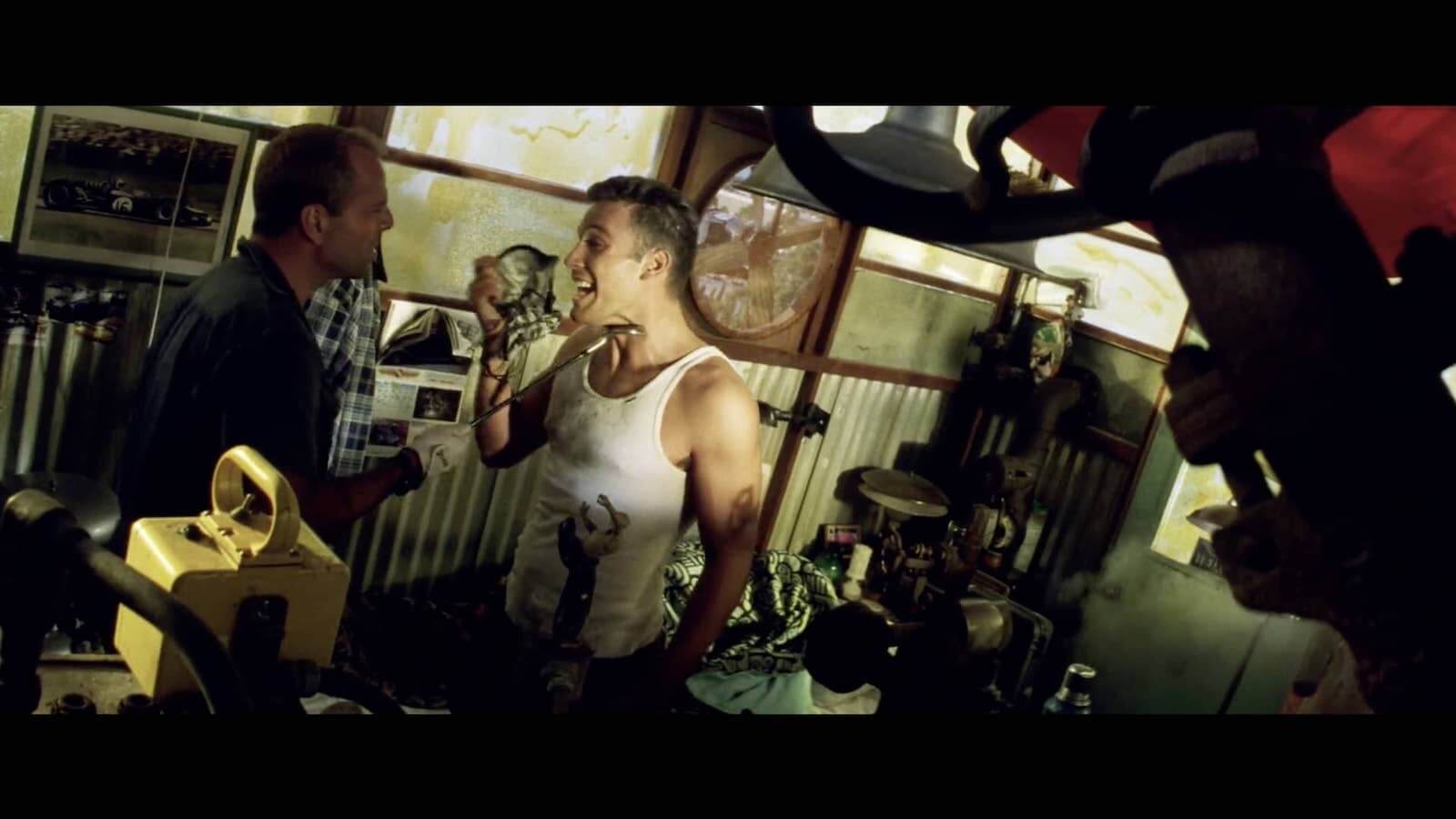
Production Design in Armageddon
The next shot is another dutch angle, with a level change that again directs our eyes toward the focus of the scene. He is using eye trace and his skills as a film director to build a completely coherent and fun scene:
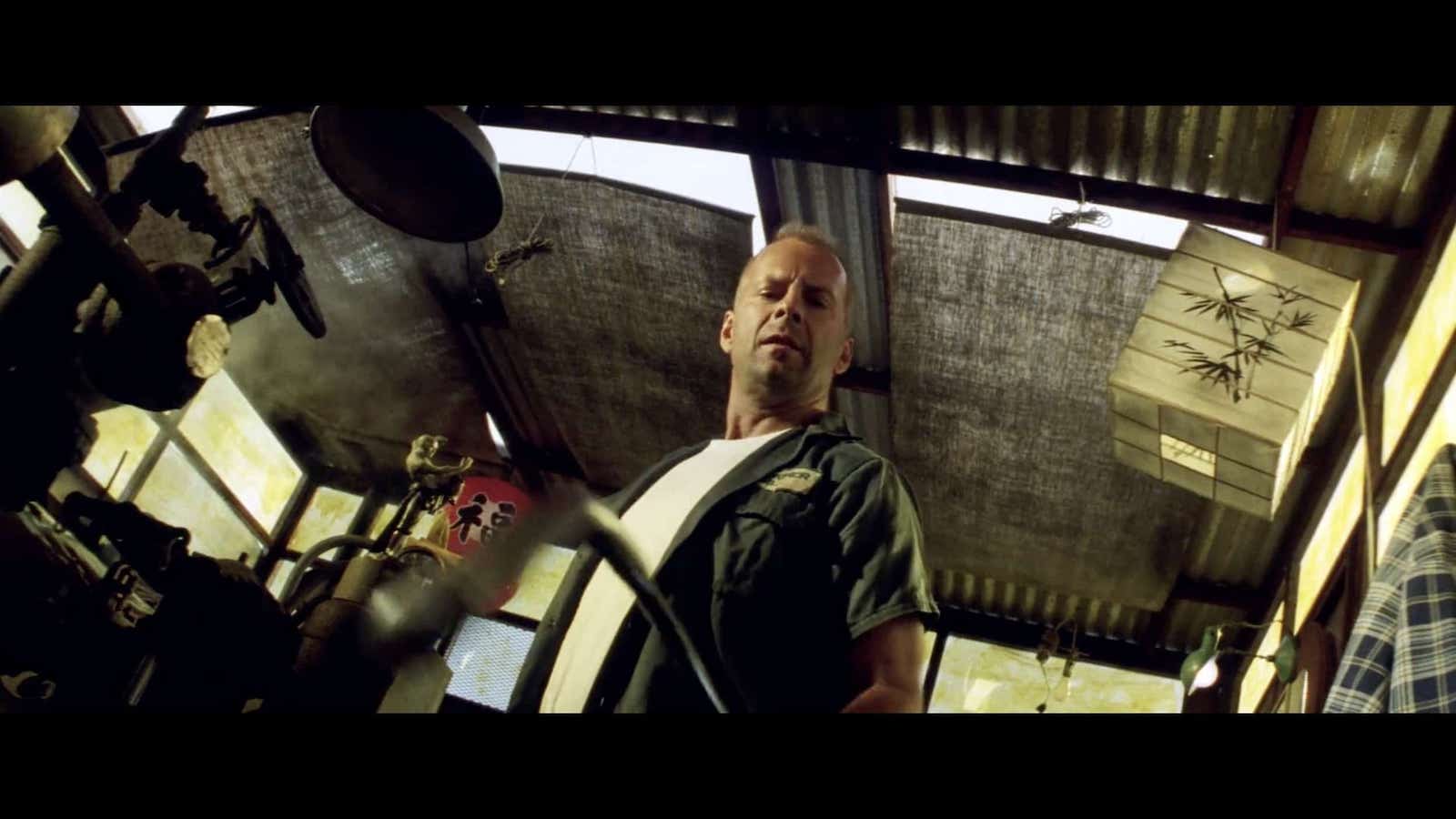
Eye trace in Armageddon
This is a the climactic moment for the scene.
Finally, when we meet grace, she is framed in a normal close-up single:
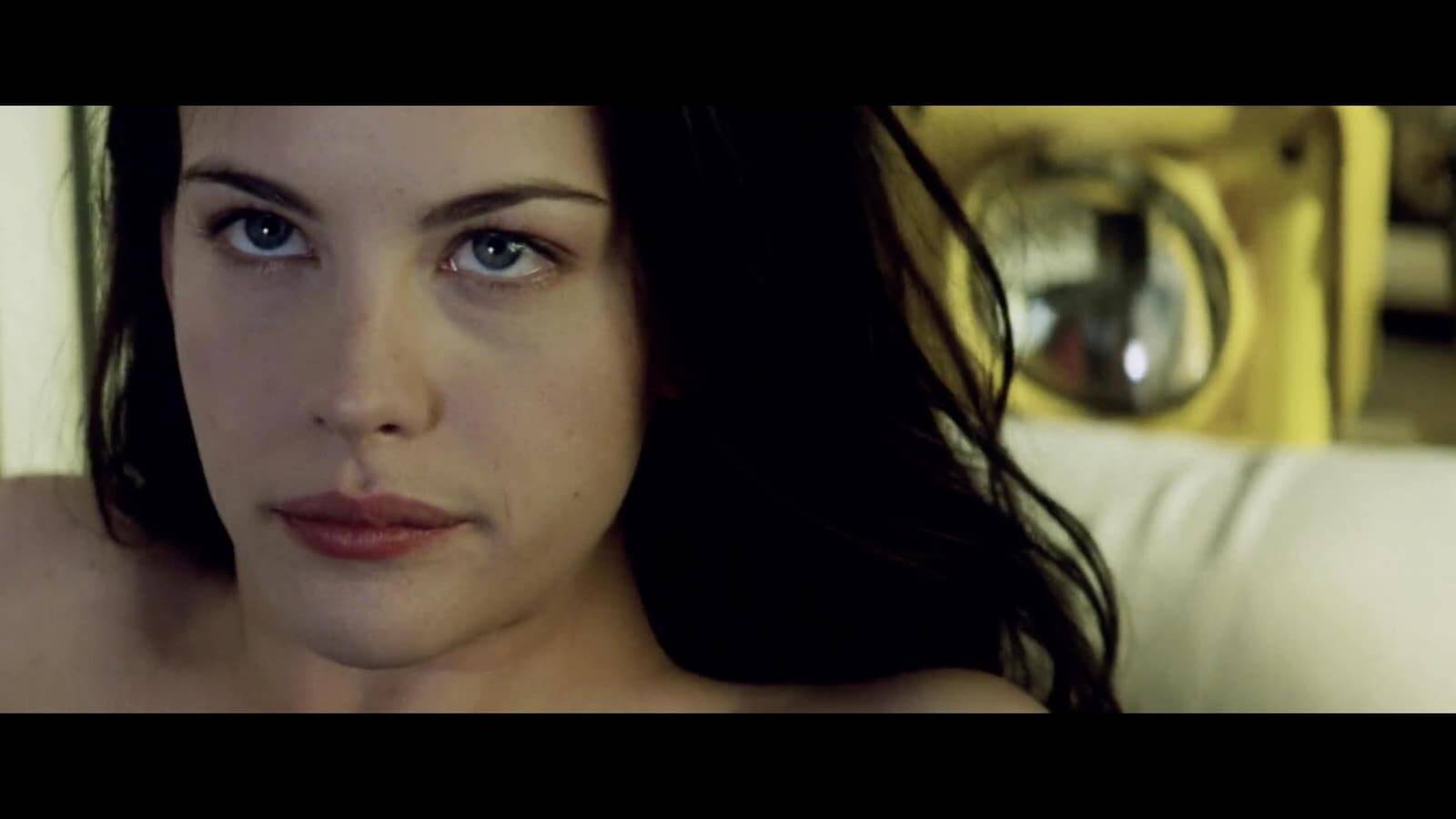
Grace in Armageddon
How does Bay show Harry's reaction?
While Harry is also isolated in a single CU… but it has a dutch angle.
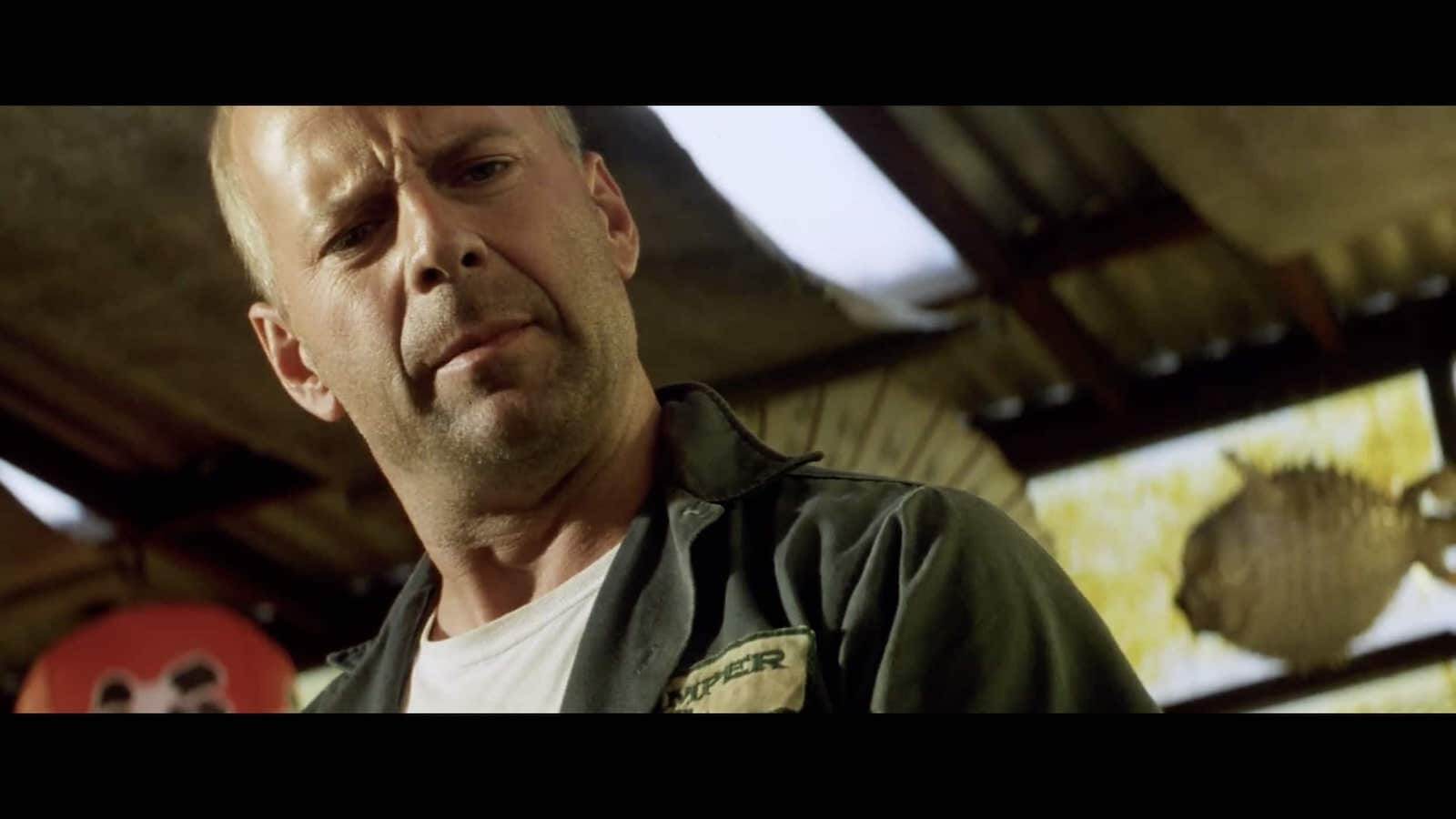
Dutch Angle in Armageddon
Yes… it’s a scene where an angry dad tries to scare his daughters boyfriend with a shotgun, but Michael Bay applies a lot of the same techniques that Spielberg or De Palma might use to say very similar things in their films.
Auteur Theory Made Practical
Explore directing techniques used by the greats
Create works like these iconic auteur directors. Explore practical directing tips you can immediately put into action on your next project.
Explore More Auteur Directors
Michael Bay directing style
5. Interesting camera placement
Michael Bay not only comes up with crazy events, but he films them in sort of crazy ways. Part of this is, again, using interesting camera angles, but also trying to find an interesting place for the camera in general.
There is a scene in Transformers: Age of Extinction where a car hits a stunt man in the face, and Michael Bay explains his shot in detail:
Michael Bay on Action
By using a high speed camera, interesting camera placement, a car suspended by a crane, air mortars, some goop, and a pair of sunglasses he creates a shot that takes any visual logic that may exist and amplifies it to the point where we are overloaded with his specific vision.
The air mortars are there to simulate the tire tread ripping up the grass during the jump, but… would it be that huge amount of turf?
Do contract soldiers often run around with spit in their mouth?
Maybe a dip, but Michael Bay doesn’t care about the logic, he cares about aesthetics. He cares about sensory bombardment. He cares about cinema.
Michael Bay
6. Depths and silhouettes
You probably already know that Michael Bay likes to use signs, vehicles, buildings, and light posts to help build depth in his shots.
He also loves to create layers of light, often resulting in a silhouette.
Armageddon President's Speech
These are good lessons to learn, and while people have pointed out that Michael Bay is sort of indiscriminate with the usage, he still understands this technique better than many working directors.
Put those layered objects in motion?
You will gain a TON of cinematic energy.
Michael Bay Editing
7. Michael Bay Editing Techniques
Jerry Bruckheimer admits that most studios are terrified when they see Michael Bay dailies, and this is both hilarious and awesome.
Michael Bay may not have a perfect idea of how his shots will cut together, I can’t be sure, but I’d argue that he knows better than people might think.
He has found things that work well for him, and uses them a lot.
Michael Bay Editing Style
8. Use quick edits for energy
Michael Bay gets a lot of footage and then cuts it together with progressively quicker cuts between shots. Especially when the action builds to a climactic moment within the sequence.
Let’s look at a scene from The Rock:Car Chase - The Rock
Let’s say… you have a sports car headed toward a falling light post.
You show the car driving - 3 seconds
You show the post falling - 2 seconds
You show the reaction shot - 1 second
The car is almost about to be hit - ½ Seconds
The post comes crashing down - ½ Seconds
Now you can show the carnage in a wide shot, and then cut back to the reaction of the driver to take us all back to the action.
Michael Bay Action Movies
9. Cuts from action to reaction
Michael Bay likes to show action to the viewer in relatively wide shots, again for the benefit of comprehension, and then uses closer shots to show off the reaction of the people in the immediate danger.
Transformers 4: Age of Extinction
This shows the events, and then show you the humanity of the scene. Even though I won’t go so far as to say Bay prioritizes building empathy, many of his action shots and cuts often do that better than most.
Michael Bay Shots
10. Use only the "best shots"
Michael Bay movies are often an assembly of a massive amount of very well composed, moving shots that take cues from commercialism.
Bay is sort of obsessed with quality, and while many have pointed out his filter is based on visual quality rather than narrative quality, he still understands visual (and audio) quality better than most.
We Made It | Pain & Gain
When working with his editors, Michael Bay will forego shots that may have a stronger narrative application for a shot that is visually stunning, and is “flawless” from a production standpoint.
He knows that the majority of people frankly don’t care to learn or understand film grammar, but rather want to see a movie that takes them out of their daily lives - a spectacle. Even explosions have to be perfect.
Michael Bay Sound Design
11. Use clean sound design
Hands down, my favorite thing about any Michael Bay film is the sound design. It is so clean and crisp and some of the sound effects that have been created have been copied and made their way into video games, music, and other movies.
Grab My Stick | Transformers 4
Does Michael Bay create these sounds? Of course not, but he is the person who signs off on them, and presumably gives notes or sets the tone (no pun intended) for how these sounds should feel inside the theatre.
Related Posts
Michael Bay VFX
12. Time out your VFX shots
Michael Bay is actually one of the best directors as far as VFX because he prefers to stay practical with explosions and car crashes while he has the CGI teams layer in the digital effects and blend them with the video.
This is the way to do it, and it’s a technique many of the superhero film directors would take note of. I’m sorry - but if Michael Bay did a Star Wars movie, the action and effects would be super nasty and edgy.
Would there be issues? Totally.
When filming purely VFX scenes, Michael Bay mentions that he likes to bring a tennis ball on set so that he can test physics and timing.
If you want an accurate camera movement, you need to time these out. Bay is clever enough to consider this, which makes him a good VFX director.
Auteur Theory Made Practical
Explore directing techniques used by the greats
Learn the styles of these iconic auteur directors. Explore directing tips you can immediately put into action on your next project.
Explore More Auteur Directors
Michael Bay Movie List
13. Michael Bay Filmography
Let’s look at a list of Michael Bay movies:
BAD BOYS
Two hip detectives protect a witness to a murder while investigating a case of stolen heroin from the evidence storage room from their police precinct.
THE ROCK
A mild-mannered chemist and an ex-con must lead the counterstrike when a rogue group of military men, led by a renegade general, threaten a nerve gas attack from Alcatraz against San Francisco.
ARMAGEDDON
After discovering that an asteroid the size of Texas is going to impact Earth in less than a month, N.A.S.A. recruits a misfit team of deep core drillers to save the planet.
PEARL HARBOR
A tale of war and romance mixed in with history. The story follows two lifelong friends and a beautiful nurse who are caught up in the horror of an infamous Sunday morning in 1941.
BAD BOYS 2
Two loose-cannon narcotics cops investigate the flow of Ecstasy into Florida from a Cuban drug cartel.
THE ISLAND
A man living in a futuristic sterile colony begins to question his circumscribed existence when his friend is chosen to go to the Island, the last uncontaminated place on earth.
TRANSFORMERS
An ancient struggle between two Cybertronian races, the heroic Autobots and the evil Decepticons, comes to Earth, with a clue to the ultimate power held by a teenager.
Transformers: Revenge of the Fallen
Sam Witwicky leaves the Autobots behind for a normal life. But when his mind is filled with cryptic symbols, the Decepticons target him and he is dragged back into the Transformers' war.
Transformers: Dark of the Moon
The Autobots learn of a Cybertronian spacecraft hidden on the moon, and race against the Decepticons to reach it and to learn its secrets.
Pain & Gain
A trio of bodybuilders in Florida get caught up in an extortion ring and a kidnapping scheme that goes terribly wrong.
Transformers: Age of Extinction
When humanity allies with a bounty hunter in pursuit of Optimus Prime, the Autobots turn to a mechanic and his family for help.
13 Hours
During an attack on a U.S. compound in Libya, a security team struggles to make sense out of the chaos.
Transformers: The Last Knight
A deadly threat from Earth's history reappears, and a hunt for a lost artifact takes place between Autobots and Decepticons, while Optimus Prime encounters his creator in space.
Up Next
Christopher Nolan’s directing style
Christopher Nolan and Michael Bay share a lot of the same filmmaking techniques, but there are some big differences as well.
Find out in our post on Christopher Nolan’s Filmmaking Style.
Up Next: Christopher Nolan’s Filmmaking Style →
Auteur Theory Made Practical
Explore directing techniques used by the greats
Create works like these iconic auteur directors. Explore practical directing tips you can immediately put into action on your next project.
Explore More Auteur Directors
Share your vision with elegant shot lists and storyboards.
Create robust and customizable shot lists. Upload images to make storyboards and slideshows.
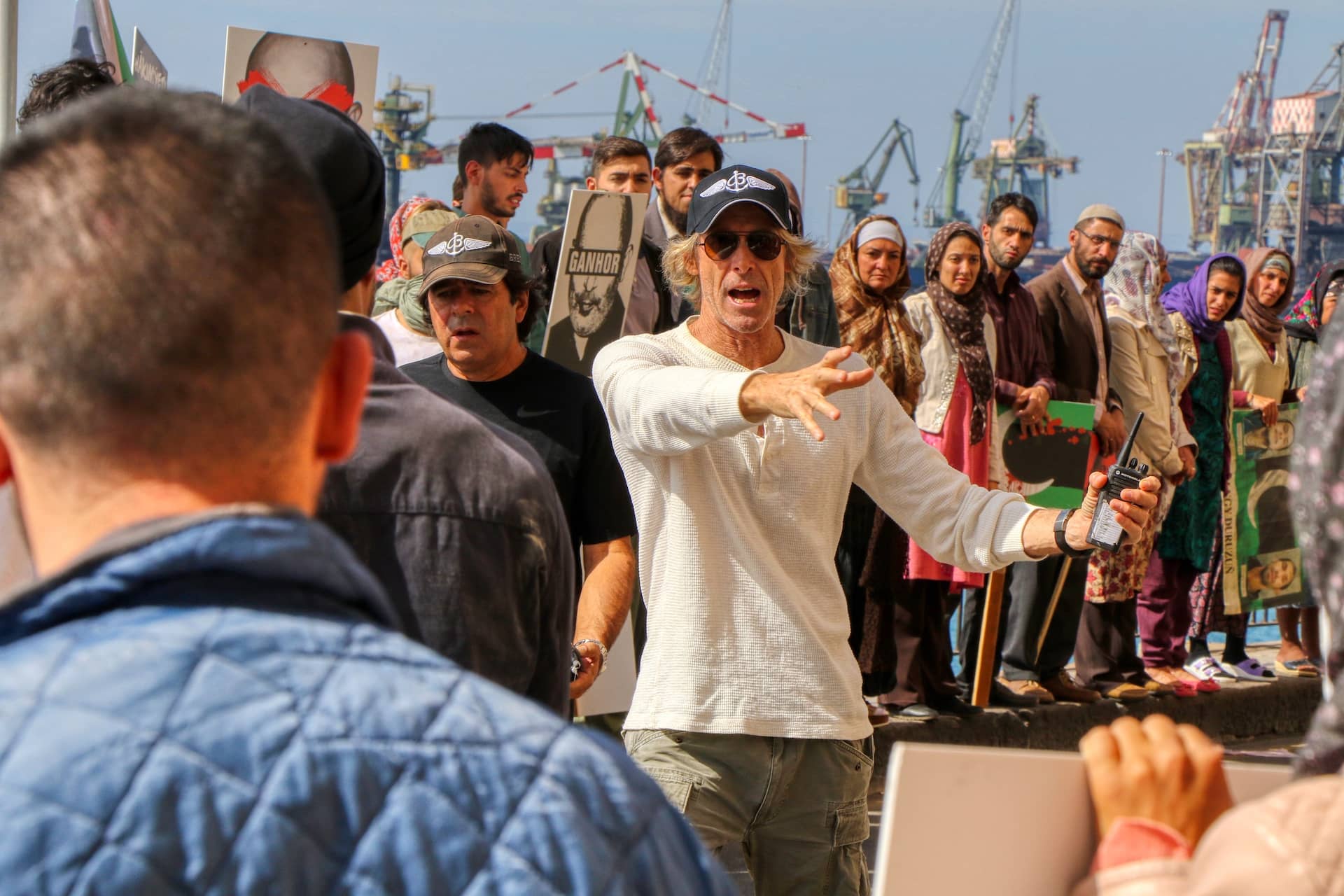

he is not an auteur tho